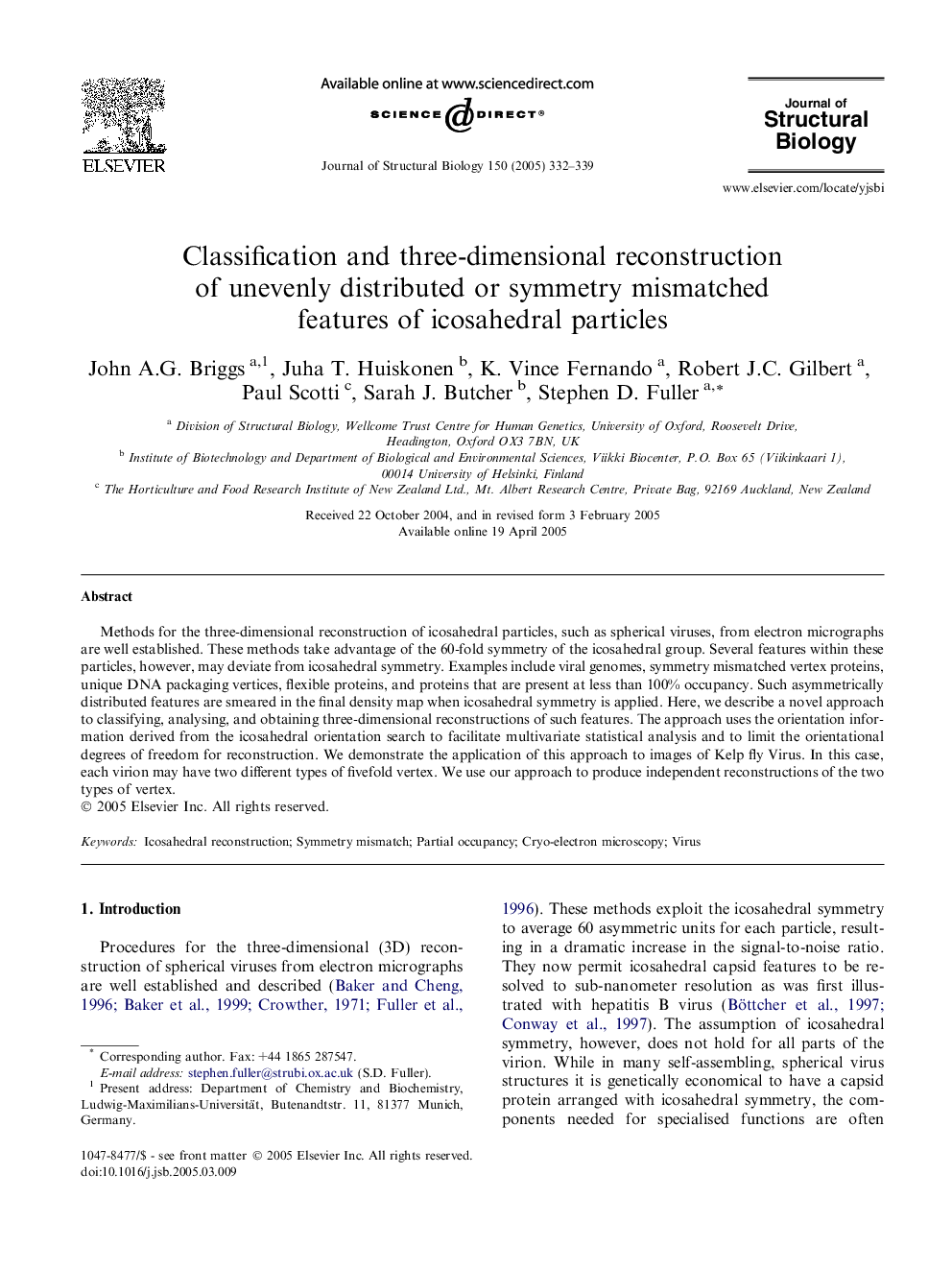| Article ID | Journal | Published Year | Pages | File Type |
|---|---|---|---|---|
| 9138983 | Journal of Structural Biology | 2005 | 8 Pages |
Abstract
Methods for the three-dimensional reconstruction of icosahedral particles, such as spherical viruses, from electron micrographs are well established. These methods take advantage of the 60-fold symmetry of the icosahedral group. Several features within these particles, however, may deviate from icosahedral symmetry. Examples include viral genomes, symmetry mismatched vertex proteins, unique DNA packaging vertices, flexible proteins, and proteins that are present at less than 100% occupancy. Such asymmetrically distributed features are smeared in the final density map when icosahedral symmetry is applied. Here, we describe a novel approach to classifying, analysing, and obtaining three-dimensional reconstructions of such features. The approach uses the orientation information derived from the icosahedral orientation search to facilitate multivariate statistical analysis and to limit the orientational degrees of freedom for reconstruction. We demonstrate the application of this approach to images of Kelp fly Virus. In this case, each virion may have two different types of fivefold vertex. We use our approach to produce independent reconstructions of the two types of vertex.
Related Topics
Life Sciences
Biochemistry, Genetics and Molecular Biology
Molecular Biology
Authors
John A.G. Briggs, Juha T. Huiskonen, K. Vince Fernando, Robert J.C. Gilbert, Paul Scotti, Sarah J. Butcher, Stephen D. Fuller,
